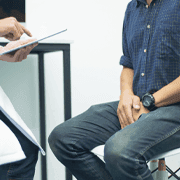Caliectasis: Understanding This Kidney Condition
In This Article
Caliectasis: Understanding This Kidney Condition
Ruban
Updated on January 01, 2024
Medically verified by Dr. Arya
Fact checked by Dr. Pournami

Urology
4 min read
Caliectasis might be the culprit. Wondering what caliectasis is?
Join us as we explore the symptoms, causes, and treatment options for this condition, empowering you to take charge of your kidney health.
Caliectasis: What You Should Know ?
Your kidneys' primary job is to filter and eliminate excess fluid and waste from your body. One of the essential structures that make this function possible is the calyx.
What is calyx? These are the cup-shaped extensions inside the kidney where urine first gathers before moving on to the bladder.
A condition called caliectasis can occasionally cause the calyces to dilate and swell with excess fluid as a result of kidney infections.
Caliectasis: What leads to it?
Caliectasis usually results from another kidney-related ailment rather than occurring on its own. Wondering what these ailments are? A few ailments that could result in calyces swelling and dilation include:
- Renal cysts or tumors
- Kidney Stones
- Renal Cancer
- Kidney infection
- Renal obstruction due to a congenital disorder
- Hydronephrosis or urinary tract obstruction
- Urinary tract infections
- Renal or urologic tuberculosis
Are There Any Signs or Symptoms?
There are symptoms associated with the underlying cause of caliectasis, but they are not specific to the condition.
Understanding the common signs of kidney disease, such as these, would be beneficial for you. Some of these are:
- A frequent, urgent need to urinate
- Blood in your urine
- Urinating with difficulty
- Pus in the urine
- Discomfort in the lower back or abdomen
- foul-smelling urine
 6 min read
6 min readWhat is Stapler Circumcision - Everything You Need to Know
 8 min read
8 min readIs Circumcision Good or Bad - Here's How to Find Out
 8 min read
8 min readCircumcision - Scientific Guide to All Your Questions
Get a Callback Now
How is The Condition Identified?
Caliectasis is frequently diagnosed concurrently with other disorders of the kidneys. Your doctor will first inquire about any symptoms you may be experiencing. In order to check for swelling and soreness in the region surrounding your kidneys, they might also do a physical examination.
After that, they'll probably employ a diagnostic test like:
Cystoscopy. In order to examine your kidneys and bladder, a camera is passed through the urethra for this test.
Ultrasound Scan. You can detect extra fluid or foreign objects in your kidneys with the use of an abdominal ultrasound.
Urography. This test provides an image of your kidneys using both a CT scan and contrast dye.
Urinalysis. a urine sample being tested.
A test like this usually reveals the presence of caliectasis.
Treating Caliectasis
Treating these conditions can be beneficial because caliectasis is a result of an underlying kidney issue. Following a diagnosis, the doctor will prescribe the right medication to restore your health.
- Antibiotics might be sufficient if the health problems were caused by a urinary tract infection.
- However, surgery may be necessary for kidney stones and tumours.
- Urine can also be drained by the doctor using catheters or nephrostomy tubes.
How Not to Get Caliectasis?
Maintaining a healthy lifestyle will lower your risk of kidney issues, which can lead to the development of caliectasis. You could take a few steps to make sure your kidneys stay healthy, such as:
- Quit Smoking
- Regular exercise
- Refraining from consuming too much alcohol
- consuming nutritious food to keep blood pressure at a healthy level
- consuming a lot of liquids
- frequent voiding of the bladder
- Holding your urine too long can promote the growth of bacteria.
- To prevent the transmission of E. Coli bacteria to the urethra, wipe from front to back.
Are There Any Possibilities of Complications?
Conditions that cause caliectasis can have serious side effects, such as renal failure, if left unchecked. Your kidneys become irreparably damaged when this occurs. Your need for dialysis or a kidney transplant will depend on the extent of the damage.
You may be more susceptible to kidney disease if you have caliectasis as a result of a UTI or UTO.
What Takes Place Following Treatment for Caliectasis?
- As soon as caliectasis is diagnosed in a timely manner and the proper therapies are prescribed, patients should recover completely and quickly. Nonetheless, the healing process may have a few unexpected outcomes.
- For example, following surgery, the ureter may hurt for a while. Patients may therefore continue to experience intermittent pain and poor kidney drainage before fully recovering. Regular ultrasounds are advised by nephrologists during this period to track recovery.
- A drainage tube may be inserted by a nephrologist to assist the kidney in healing from surgery. Eventually, the kidney should regain its typical size and shape and resume its effective operation. If, after treatment, your kidney is still abnormally enlarged, your nephrologist may change your course of treatment.
The enlargement of your kidneys' calyces is known as caliectasis.
It is typically brought on by an underlying kidney-related issue.
After this illness is treated, caliectasis usually goes away.
Consequently, to prevent long-term kidney damage, it is wise to speak with your doctor as soon as you notice any symptoms of kidney disease.
Source Links
the healthy apron
health line
healthmatch
healthgrades



